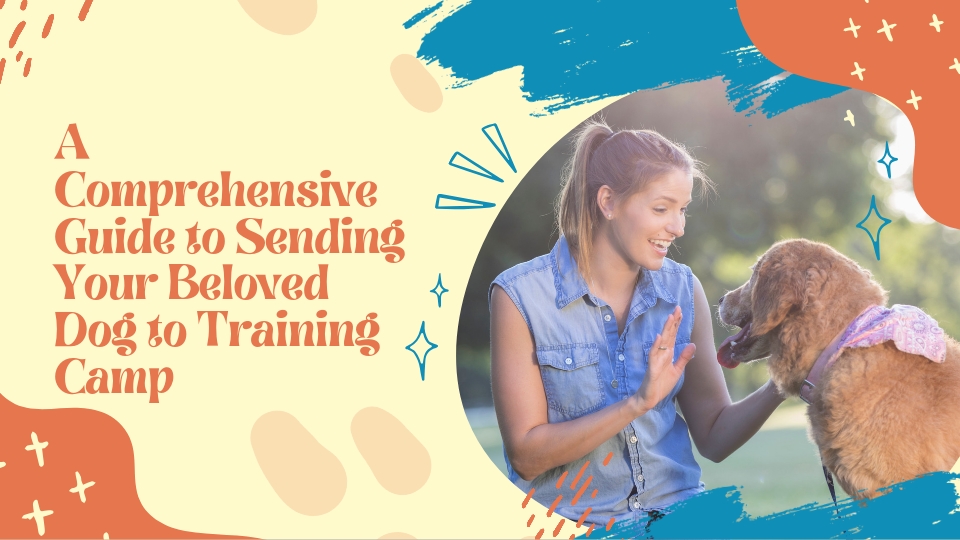Embarking on the journey of sending your cherished canine companion to a training camp is a significant step towards fostering a harmonious relationship and ensuring a well-behaved and socially adept pet. In this comprehensive guide, we delve into the myriad aspects of why, how, and what to consider when sending your dog to a training camp. From understanding the need for professional guidance to choosing the right camp and preparing your furry friend for the experience, this guide aims to provide a thorough roadmap for a positive and enriching training camp experience.
Understanding the Need: Why Send Your Dog to Training Camp?
Sending your dog to a training camp is often prompted by specific behavioral concerns or the desire to instill essential obedience commands. Whether your canine companion is grappling with challenges like excessive barking, jumping, or leash pulling, or you simply wish to enhance their overall manners, a training camp offers a focused and structured environment for effective learning.
Beyond addressing behavioral issues, training camps play a crucial role in facilitating socialization opportunities for dogs. The controlled setting allows for interaction with other canines and humans, fostering improved social skills and reducing anxiety. It is, essentially, an investment in your dog’s overall well-being and the foundation for a balanced and happy coexistence.
Benefits of Training Camp for Dogs: A Holistic Approach
1. Professional Guidance: Training camps are led by experienced dog trainers well-versed in canine behavior. Your dog benefits from the expertise of professionals who can tailor training methods to suit individual needs, ensuring a personalized and effective learning experience.
2. Structured Learning Environment: Dogs thrive on routine, and a training camp provides a structured setting conducive to learning. Consistent and focused sessions accelerate the learning process, enabling your furry friend to grasp commands and behaviors more efficiently.
3. Socialization Opportunities: Interaction with other dogs and people in a controlled environment is a key aspect of training camps. This helps dogs develop better social skills, leading to increased confidence and adaptability in various situations.
4. Addressing Behavioral Challenges: Whether it’s excessive barking, aggression, or separation anxiety, training camps are equipped to address a variety of behavioral challenges. Trainers can identify root causes and implement targeted solutions, promoting a positive transformation in your dog’s behavior.
5. Consistency in Training: One of the challenges of training at home is maintaining consistency. Training camps provide an environment where commands are reinforced consistently, leading to faster and more effective learning outcomes for your canine companion.
Choosing the Right Training Camp: Key Considerations
1. Trainer Qualifications: Ensure that the trainers at the camp are qualified and experienced in positive reinforcement training methods. A good trainer understands dog behavior and can tailor their approach to your dog’s unique temperament and needs.
2. Camp Environment: A visit to the training camp beforehand is advisable to assess the facilities and overall environment. A clean, safe, and well-maintained space indicates a commitment to the well-being of the dogs in training and contributes to a positive learning atmosphere.
3. Training Philosophy: Understand the training philosophy of the camp. Positive reinforcement methods, which reward desired behaviors, are generally considered effective and humane. Avoid camps that rely on harsh or punitive techniques, as these can have detrimental effects on your dog’s well-being.
4. Communication with Owners: A good training camp maintains open communication with owners. Regular updates on your dog’s progress and any concerns that arise during training are crucial for a transparent and collaborative experience, ensuring that you are an active participant in your dog’s training journey.
5. References and Reviews: Seek references from other pet owners who have enrolled their dogs in the training camp. Online reviews can also provide valuable insights into the experiences of other dog owners and the effectiveness of the camp’s training methods.
Preparing Your Dog for Training Camp: A Smooth Transition
1. Health Check: Ensure your dog is in good health before sending them to training camp. Vaccinations should be up to date, and any existing medical conditions should be communicated to the camp staff to ensure appropriate care.
2. Comfort Items: Pack familiar items such as your dog’s favorite toy, blanket, or bed to provide comfort in the new environment. Familiar scents can help ease the transition and make your dog feel more at home.
3. Clear Instructions: Provide clear instructions to the training camp staff regarding your dog’s specific needs, dietary requirements, and any behavioral concerns you’d like them to address. Open communication sets the foundation for a collaborative and effective training experience.
4. Positive Introduction: When dropping off your dog at the training camp, maintain a positive and calm demeanor. Dogs are perceptive to their owners’ energy, and a reassuring presence can contribute to a smoother transition for your furry friend.
5. Follow-Up Training at Home: Understand that training is an ongoing process. Once your dog returns home, continue reinforcing the commands they’ve learned at the camp to maintain consistency. Consistent reinforcement ensures that the positive behaviors learned at the camp become ingrained in your dog’s daily life.
Sending your dog to a training camp is not just a practical step in pet ownership; it’s an investment in their well-being and the overall harmony of your household. With the right camp, a positive approach to training, and ongoing reinforcement at home, you’re not just sending your dog for training; you’re embarking on a transformative journey that enhances the bond between you and your four-legged friend. The journey promises a positive and well-mannered companion, and the shared experiences will create lasting memories for both you and your beloved dog.


